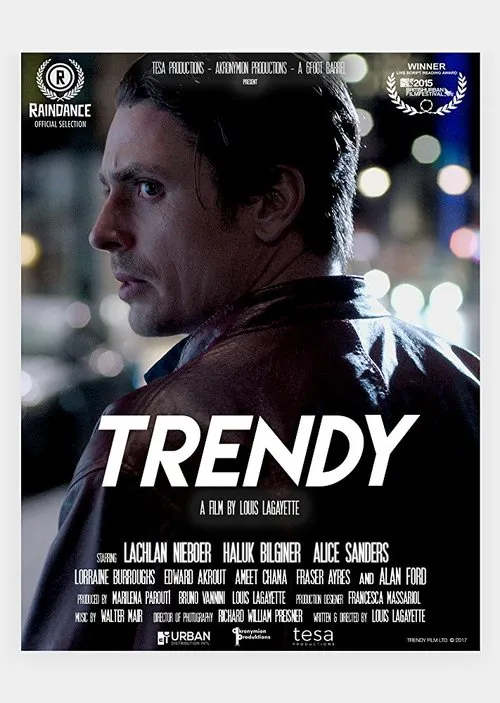Trendy

Trama
The movie is a gritty and intense portrayal of the effects of gentrification on the people living in an area of East London. The story revolves around Richard, a 30-year-old teacher, who in search of a fresh start, moves to this area from who-knows-where, but the film does not reveal this information. As Richard settles into his new life, he discovers the harsh realities of the city, where hipsters, cockneys, and immigrants coexist in a tense environment. At first, Richard is fascinated by the city's nightlife, the various cultures, and the people that inhabit this neighborhood. However, his infatuation with the area's charm is short-lived as he encounters rejection, hostility, and even abuse from the locals. Despite his attempts to integrate, Richard finds himself struggling to cope with the city's unforgiving nature. As Richard navigates the complexities of urban life, his past demons begin to resurface. The film never explicitly reveals the details of Richard's past, but it hints at a traumatic event that has left him emotionally scarred. As the story progresses, Richard's inner turmoil becomes increasingly evident, and his behavior begins to deteriorate. Richard's past and present collide when he encounters a young local, who may be a representation of himself when he was younger. This character, whose name is not mentioned, becomes Richard's confidant and is drawn to his struggles. However, even this connection is tested as the young man's loyalty is put to the test in the face of Richard's increasingly volatile behavior. As the city's influence on Richard intensifies, his actions become more and more destructive. His violent instincts, suppressed for years, begin to resurface, and he starts engaging in behaviors that put himself and those around him at risk. This downward spiral is accelerated by the city's harsh environment, which offers him little opportunity to redeem himself or seek support. One major theme of the film is the concept of gentrification and the effects it has on local communities. The film shows how the influx of new people, who are more affluent and educated, can push the original inhabitants of the area to the fringes. This dynamic is particularly evident in the film's portrayal of the relationship between the hipsters, who are depicted as privileged and condescending, and the native cockneys and immigrants, who are seen as working-class and often marginalized. Throughout the film, the director uses vivid imagery and cinematography to capture the grittiness and beauty of the East End. The film's palette is dominated by muted colors, which reflects the gloomy atmosphere of the city. The use of hand-held camera work and close-ups adds to the sense of realism, drawing the viewer into the world of the characters. As the story reaches its climax, Richard's demons become too powerful to ignore. His behavior becomes increasingly erratic, and he starts to wreak havoc on the community. His young friend, who has been trying to reach out to him, is forced to confront the fact that he cannot save Richard from himself. In the final act of the film, Richard is left alone to face the consequences of his actions. The city, which had once promised him a fresh start, has ultimately rejected him. His past demons continue to haunt him, and it seems that he is too far gone to be salvaged. The film ends on a bleak note, leaving the viewer to ponder the question of whether redemption is possible for someone who has been so broken by the city.
Recensioni
Raccomandazioni




